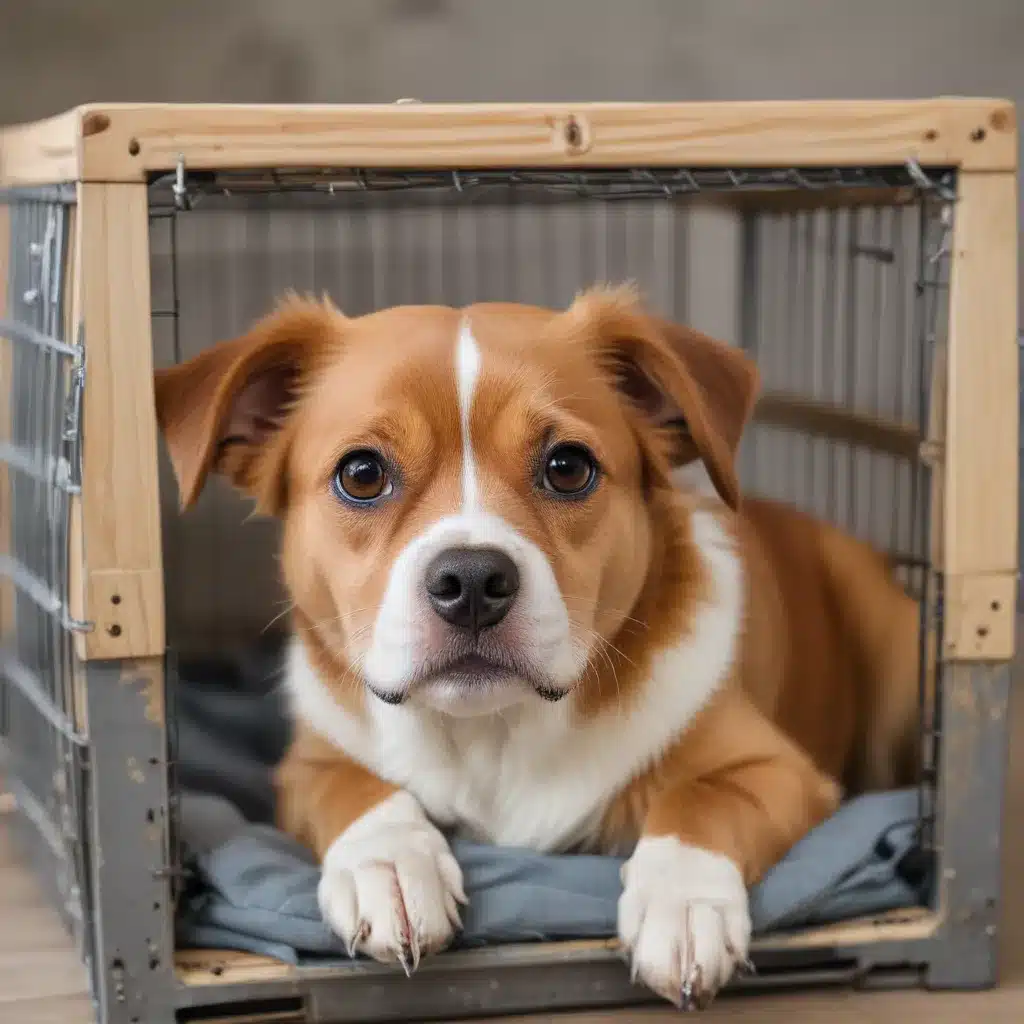
The Crate Conundrum
As a new dog owner, I’ve had my fair share of challenges when it comes to crate training. When I first brought home my shepherd-y mix, he made it crystal clear that he was not a fan of his crate. He would scratch at the door, whine, and generally make it known that he’d rather be anywhere but in that dreaded box. But as any responsible pet parent knows, crate training is essential for your dog’s safety and your own sanity, especially when it comes to introducing new furry friends to a household.
Slow and Steady Wins the Crate Race
After a few failed attempts at simply shoving my pup into his crate, I realized I needed to take a more patient and positive approach. Inspired by the sage advice from the dog training experts, I decided to make the crate a sanctuary of treats and affection for my four-legged companion.
The first step was to associate the crate with only good things. I started by placing his meals inside, slowly moving the dish further and further back until he was willingly trotting in to chow down. Next, I hid his favorite high-value treats – think peanut butter, hot dogs, and cheese – throughout the crate, creating a treasure hunt that had him eagerly exploring his new den.
Crate Training 101
As my pup became more comfortable with the crate, I began incrementally increasing the time he spent inside. Experts recommend never leaving a dog crated for more than four hours at a time, as it’s simply not fair to expect them to hold it that long. I would close the door for just a few minutes, praising and rewarding him when he remained calm, then gradually extending the duration.
To make the crate a more inviting space, I experimented with different creature comforts. Warm blankets from the dryer, soothing music, and a peanut butter-stuffed Kong toy all helped transform the crate from a prison to a cozy sanctuary. And just as the experts advised, I made sure to ignore my pup for a few minutes before and after crate time, reinforcing the idea that the crate isn’t a punishment, but rather a safe haven.
Crate Training Myths Debunked
One of the biggest misconceptions about crate training is that it’s inherently cruel or damaging to a dog’s psyche. But as the training video so eloquently explains, dogs actually love having their own “room” – a space that’s theirs and theirs alone. It’s all about how we introduce and frame the crate experience.
Another common concern is that crate training will create resentment or damage the human-canine bond. But in my experience, the opposite has been true. By making the crate a positive, rewarding place, I’ve actually strengthened the trust and affection between my pup and me. He knows that when he’s in his crate, good things are coming his way.
Crate Training Triumphs
As I reflect on my crate training journey, I’m proud to say that my once crate-averse pup is now a certified crate enthusiast. He’ll often retreat to his cozy den on his own accord, curling up for a nap or settling in with a favorite chew toy. And when it’s time for me to head out, he happily trots into his “room” without any fuss or drama.
Crate training has been an invaluable tool, not just for my own peace of mind, but for my dog’s overall well-being and safety. Thanks to the patience and positive reinforcement approach, my pup is now a seasoned traveler, able to adjust to hotel stays, vet visits, and any other situation that requires time in a crate.
Embracing the Crate
If you’re struggling to get your dog comfortable in their crate, I encourage you to take a step back and reevaluate your approach. Remember, dogs are creatures of habit, and with time and consistency, you can transform that dreaded box into a beloved sanctuary. Your dog’s safety and your own sanity are worth the effort – trust me, the payoff is priceless.

